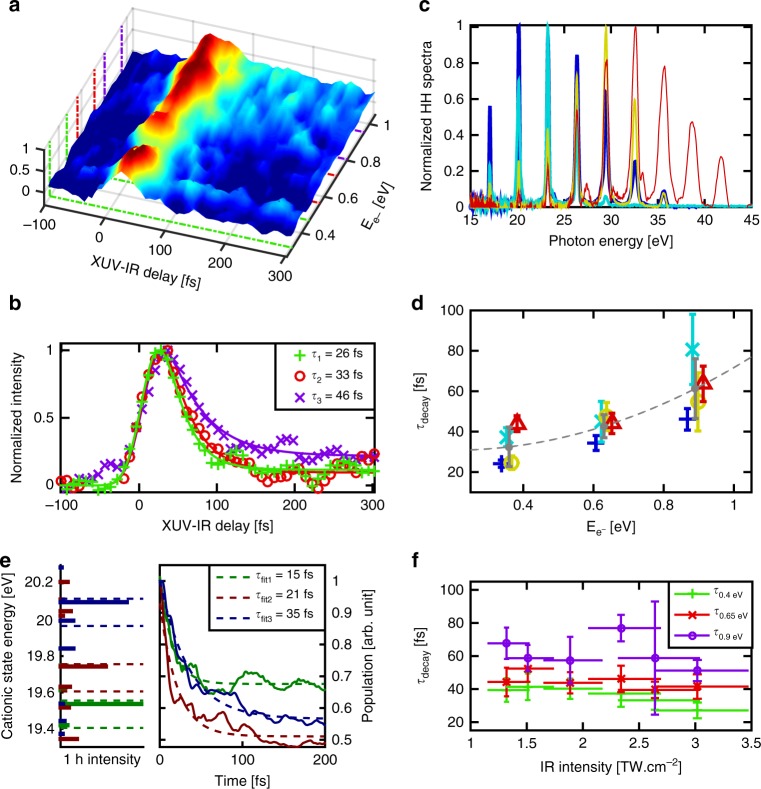Fig. 2.
Ultrafast relaxation dynamics of naphthalene cation. a Time-dependent two-color electron kinetic energy spectrum for Naph. Three structures appear that can be related to the ionization from the three orbitals 6ag, 5b1u, and 4b2u of the neutral molecule (shown in green, red, and purple, respectively). The signal is integrated over 150 meV energy widths, in order to extract the time-constants. b Time-dependent electron signal for the three structures discussed in (a). Three time-constants are extracted from a simple fitting procedure (see Methods). c The different High Harmonic spectra used in the experiment. d Extracted lifetimes for the three zones discussed in (a), for different high harmonic spectra (the same color code has been used as in (c)). e (left) The relevant part of the cationic spectrum of Naph produced upon XUV ionization computed with ADC(3) method. The states are populated by ionization from the 6ag, 5b1u, and 4b2u orbitals of the neutral molecule (shown in dark green, dark brown, and dark blue, respectively). The intensity of each line reflects the multielectronic character of the state, as well as its initial population. (right) Time-dependent populations obtained via the constructed vibronic-coupling model and integration over the corresponding 150 meV energy windows. f Extracted lifetimes for the three zones at 0.4, 0.65, and 0.9 eV (shown in green, red, and purple respectively) as a function of the IR intensity

